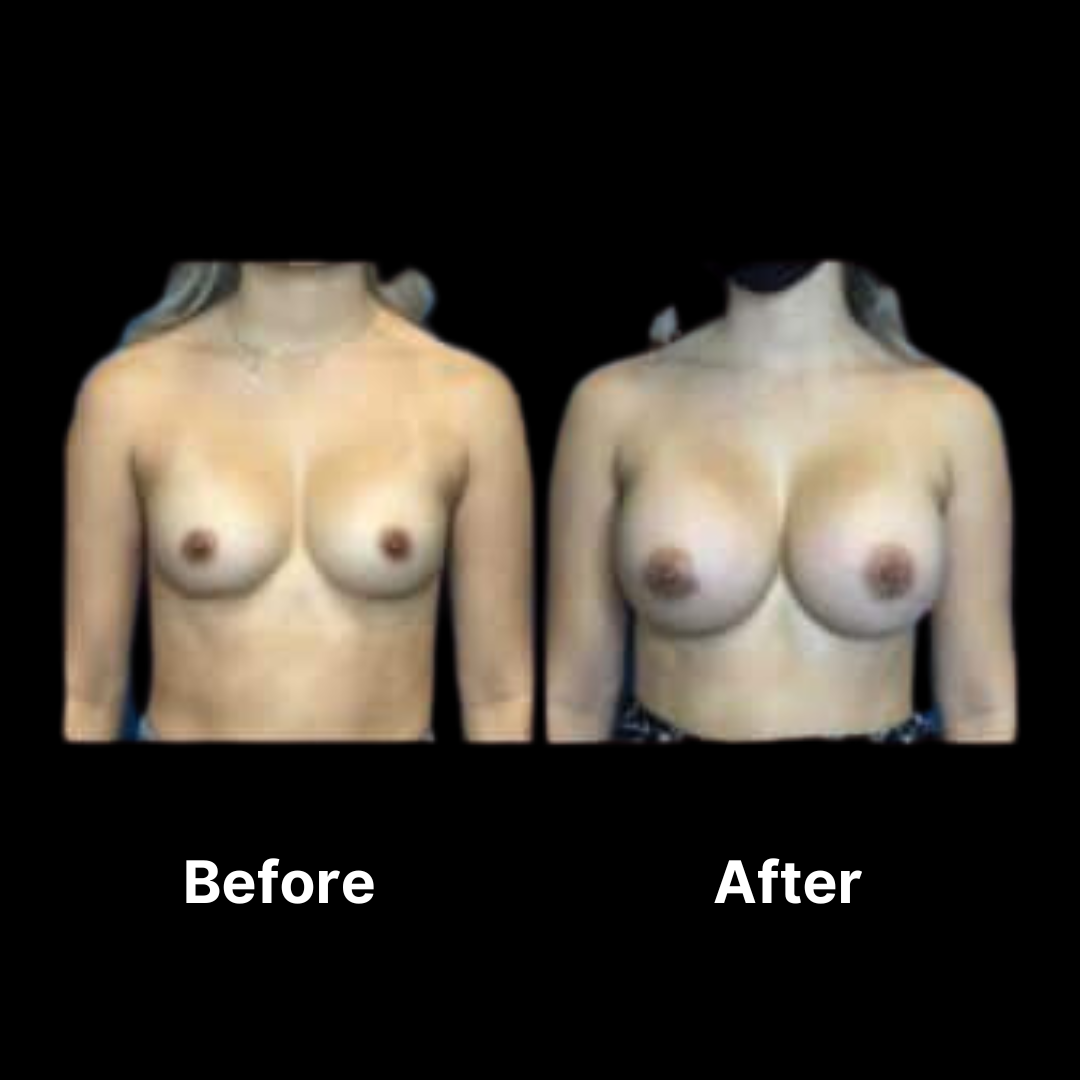Breast augmentation is a cosmetic procedure performed to enhance the size and shape of the breast. This is achieved through the placement of saline or silicone breast implants. Many women choose to have this procedure to restore breast volume after pregnancy or weight loss to achieve a natural improvement in breast size and contour. Scottsdale breast augmentation, including breast implants in Scottsdale, AZ, offers personalized options for those seeking to improve their breast aesthetics
Candidates for Breast Augmentation
Healthy individuals who are looking to restore breast fullness, add balance to complement their lower body better, or enhance their self-image can often benefit from this procedure. However, a breast augmentation cannot correct severely drooping breasts. If this is your main concern, a breast lift may be required along with a Scottsdale breast augmentation to achieve your goals. Remember, breast augmentation in Scottsdale is a personal choice and should be done for yourself and not someone else. To learn more about this procedure and if you are a candidate, contact our office today to schedule a consultation appointment.
Before your breast implant procedure, you will need to choose which type of breast implant you would like inserted. There are two main types of implants used today, including saline and silicone. Saline implants are created with a silicone shell filled with sterile saltwater, while silicone implants are created with a silicone shell and filled with a silicone gel.
The breast augmentation procedure can be performed using IV sedation or general anesthesia. Your doctor will recommend the best option for you. To begin, incisions are created through which the breast implants will be placed.
There are three incisions patterns that can be used during this procedure, including:
Periareolar Incision:
Created around the lower half of the areola.
Inframammary Incision:
Created in the inframammary fold (the fold beneath the breast).
Transaxillary Incision:
Created in the armpit region.
Next, the breast implant of your choice will be inserted into a pocket either under the pectoral muscle or over the pectoral muscle. This placement will depend on the type of implant, the amount of breast enhancement desired, and your surgeon’s recommendation. Incisions will then be closed with sutures and/or surgical tape.
Testimonials
“I have been a Botox patient for years and had my breast augmentation done as well. The doctor wasn't the typical doctor. He actually sat down and spent time with me making sure I fully understand everything and made me feel less anxious. The office is well kept and the staff was very quick and informative! I would recommend this place to everyone.”
READ MORE REVIEWS
Following breast augmentation, you will experience soreness for the first couple of weeks, and strenuous exercise should be limited for 2-4 weeks. You may need to wear a surgical bra to help support your new breasts and reduce swelling. Your doctor will provide you with specific aftercare instructions, and it is important that you follow them to ensure that you heal correctly. If you have any questions or concerns regarding your breast augmentation recovery, do not hesitate to contact our office.
If you would like to learn more about breast augmentation and if it can benefit you, contact North Valley Cosmetic Surgery in Scottsdale, AZ today. We are dedicated to providing beautiful, natural-looking results that you can enjoy for years to come.
What is the difference between a breast augmentation and breast implants?
Before we go further, we want to explain that breast augmentation uses implants to achieve the desired contours. The only difference between the two is this: augmentation is the procedure necessary for breast enhancement, while implants are the mechanism used. Each relies on the other to deliver results.nnOne discerning factor you need to know is that not all implants are created equally.
What can go wrong with breast implants?
The most common breast implant complications include:nnthick, noticeable scarring that does not fadenhardening of the breast tissue, due to scar tissue shrinking around the implantna rupture where the implant leaks that can cause small lumps called silicone granulomas to formnnoticeable creases or folds in the implantnrotation of the implant within the breastn“rippling” of the implant, if a thin layer of tissue covers the implant and sticks to the implant surfaceninfection that will usually require removal of the implantnbeing unable to breast-feed or producing less breast milk than beforenbeing dissatisfied with the results and requiring a further operationnnerve damage to the nipplesnNerve damage can make someone’s nipples feel more sensitive, less sensitive, or they may lose feeling entirely. The damage may only be temporary for some women, but it can be permanent in others.nnOther, less common complications of breast implant surgery include:nnexcessive bleeding during surgerynan allergic reaction to the anestheticna blood clot forming in the veins deep in the body
How painful is breast augmentation recovery?
During the breast augmentation procedure, you will not feel any pain because the procedure is performed while you are under general anesthesia. After you return home and the anesthesia begins to wear off, you will likely feel soreness under your armpits and around your chest area.
Do you have to replace breast implants every 10 years?
Many women mistakenly believe that breast implants have to be replaced every 10 years. Although the average lifespan of a breast implant is 10-15 years, breast implants actually only need to be replaced if you have a problem such as implant rupture or capsular contracture.
Can fat be transferred to breasts?
Breast augmentation can be performed with fat transfer, called “autologous breast augmentation.” The procedure involves harvesting fat from another body area, such as abdomen, love handles, thighs, or buttocks. Once harvested, the fat cells are purified, and then injected into the breasts to add volume.
Can breast implants last 30 years?
On average, todays implants are designed to last more than a decade, with the chance of rupture increasing by one percent each year. So, the older your implants are, the greater your risk of rupture or other complications. In many cases, breast implants can remain in good shape for 20 years or more
Can breast implants cause pain years later?
Within two years of having silicone breast implants inserted, women reported experiencing signs and symptoms of connective tissue disease such as increased muscle weakness, fatigue, and muscle and joint pain. These symptoms may explain the chronic pain that is being experienced
Are breast implants under warranty?
The most likely warranty scenario you will encounter is an leaking breast implant 10 years or more after your breast augmentation. In this situation, all four manufacturers standard warranties will provide you with a replacement implant plus an additional one if needed, for the other breast.
Can I move my arms after breast augmentation?
With fresh implants, I advise no lifting and keeping the arms below the shoulder for two weeks or less. After that, your arms can then be raised. And for 3 months I recommend no lifting at all at minimum of any more than 10 pounds.
Can you breast feed after breast augmentation
Most women with breast implants are able to breastfeed, though there are a few exceptions. Whether youre able to breastfeed depends on the original state of your breasts before surgery and possibly the type of incision used.
Do breast implants cause autoimmune disease?
In the largest study of long-term safety outcomes for patients with breast implants, researchers at The University of Texas MD Anderson Cancer Center have found that silicone implants are associated with some rare diseases, autoimmune disorders and other conditions; although a causative relationship has not been
Do breasts sag after breast augmentation?
This is completely normal, as the implants will begin falling slightly and settle into place during the recovery process. The process of the implants settling is not considered sagging. Sagging will happen over time as the breast tissue begins aging. The larger the implants are, the quicker sagging will occur.
How do I know if my breast implant is leaking?
Signs that your silicone implant has ruptured can include changes in breast shape and size, and increasing pain, firmness, and swelling over a period of weeks. Rupture can also cause capsular contracture. Silicone implant rupture that doesnt cause any noticeable symptoms is known as “silent rupture.”
How do you know if you have capsular contracture?
The primary indication of capsular contracture is an increasing tightness of the breast. The breast implants seem to be high-riding on the chest, much more than earlier. The breast implant is distorted and may appear round or “ball-like.” Noticeable rippling may occur as well.
Is getting a breast augmentation worth it?
Its a major step for most women, and often a positive one. Studies have shown that breast implants can help boost self-esteem, body image, and sexual satisfaction. But studies have also pointed to the critical need for careful screening by doctors, and self-awareness among women, before breast implant surgery.
Will Cigna cover breast augmentation?
Insurance usually will not cover breast enlargement surgery. It will, though, cover breast implants for women who have had mastectomies due to breast cancer. If you need further surgery later on, your health insurance may not cover that, either. Having breast implants may also affect your insurance rates later on
Whats the safest breast implant?
Both saline and silicone breast implants are considered safe for breast augmentation and breast reconstruction.
What is the most common breast implant size?
Popular implant size – The most popular size for breast implants is between 350 to 400 cc. For most patients, this would look like a small to a large C cup. In fact, all of the top 5 most popular sizes are between 350 to 500 cc.
What are gummy bear implant?
Overview. Gummy bear breast implants are one of the options available for breast augmentation. The term “gummy bear” is actually a nickname for these teardrop-shaped, gel-based implants. Theyre known to retain their shape better than other types of breast implants made from saline and silicone.
What are cohesive breast implants?
Cohesive breast implants, also known as “form-stable” or gummy bear implants, are a new generation of silicone implants used for breast augmentation. ... The more crosslinking of the silicone molecules, the firmer the gel and the more resistant to a change in shape.
Is there an alternative to breast implants?
Theres a new alternative to implants that uses your own fat cells to enhance breast tissue. Its called fat grafting, and while it is an involved process of multiple injection procedures, the end result does not involve any surgery or scarring.
How long are breast augmentation incisions sore?
Some pain and tenderness are common for two to three weeks following breast augmentation, particularly around the incisions. Again, following our postoperative instructions, including incision care, is a good way to guard against complications that can cause further discomfort.
Does getting breast implants make you gain weight?
Many women find that they gain some weight after undergoing breast augmentation. In most instances, only 3-5 pounds are gained after your procedure. While some of this weight gain is caused by the presence of breast implants in your body, there are other factors that account for the rest of the weight.
Does insurance cover breast implants?
Insurance usually will not cover breast enlargement surgery. It will, though, cover breast implants for women who have had mastectomies due to breast cancer. If you need further surgery later on, your health insurance may not cover that, either. Having breast implants may also affect your insurance rates later on.
How dangerous is breast augmentation surgery?
What are the health risks of breast implants? Risks linked to breast implants include infection, rupture, capsular contracture (when the body forms scar tissue around the implant), breast implant illness, and, in rare cases, breast implant-associated anaplastic large cell lymphoma,
How long do breast implants last?
On average, todays implants are designed to last more than a decade, with the chance of rupture increasing by one percent each year. So, the older your implants are, the greater your risk of rupture or other complications. In many cases, breast implants can remain in good shape for 20 years or more.
how much does breast augmentation cost?
Costs. How much breast implants cost depends on the location, doctor, and type of implant used. Typically, the surgery ranges from $5,000 to $10,000. Because it is a cosmetic procedure, health insurance usually doesnt cover breast augmentation.
Is breast enlargement possible without surgery?
Conclusions: Long-term breast enlargement without surgery is possible with an external tissue expander. The more it is used, the more the breasts grow. To avoid disappointments and drop-outs, women have to be well informed about the time and lifestyle commitment.
What are Natrelle breast implants?
Natrelle INSPIRA® Smooth Round Gel Breast Implants were designed to have a full round look and a soft feel when held in your hands. Silicone breast implants are prefilled with silicone gel, a thick fluid that makes the actual breast implant feel softer than saline implants.
What is the average cost of a breast augmentation?
Costs. How much breast implants cost depends on the location, doctor, and type of implant used. Typically, the surgery ranges from $5,000 to $10,000. Because it is a cosmetic procedure, health insurance usually doesnt cover breast augmentation.




